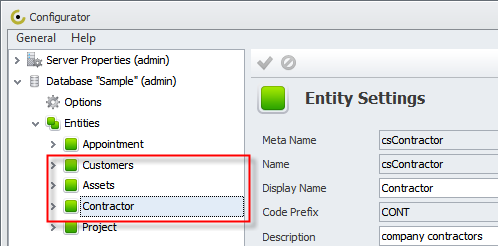| Order 750 checklists in MS Word and PDF printable format at $49.99 USD only. |
BUY NOW!  |
Analyze business requirements.
First of all, you need to carry out a detailed analysis of your business to identify what's required to keep the business running smoothly. The purpose is to generate a list of business requirements to be used as a foundation for designing your custom database.
You can use the following methods of data gathering in analyzing your business and identifying the requirements:
- Interviews
- Surveys
- Analysis of document flows
- Prototyping
- Questionnaires
- Simulations

Design the concept of your database.
Next, you need to use the results of your business analysis to create a model that lays out the business objects (entities) of your company and establishes their relationships. This model (or conceptual design) of your database can be visualized on the ER diagram (entity-relationship diagram). The ER diagram would show Entities, their Attributes and their Relationships.
Take these key steps to design the concept of your custom database:
- Identify the entities that characterize your business. For example, the entities could be "Assets", "Customer", "Product", "Contractor", "Project", "Task", etc. In CentriQS Configurator you can add these entities to your custom database.
- Create a model that describes the entities and their attributes
- Identify relationships between the entities
- Build the ER diagram that visualizes the entities, their attributes (properties) and their relationships
Design the logical structure for your database.
Once the relationships, properties and dependencies of your business entities have been identified and set, the data can be arranged into a logical structure and then is mapped into your database by using tables. Actually, tables serve as the building blocks of your database. Tables will help you arrange quantitative data of the entities in columns and rows.
To create the logical structure of your database, do these actions:
- Use the ER diagram to combine each entity and its properties into a table
- Look at the entity dependencies to decide how the data in one table is related to the data in other tables
- Add rows and columns to each table to clarify the relationships
- Fill in each table with test data to normalize table rows and columns and to check for errors
- Apply the normalization rules to the entire logical structure of the database
- Communicate the logical structure to users
Implement the database.
This step relates to the physical design and implementation of your database in your business environment. The purpose is to develop and implement a custom database according to the logical structure.
Consider doing these tasks:
- Specify data elements and data types of your custom database
- Carry out indexing of the database tables
- Cluster the database to create key components (nodes) that ensure efficiency of data scalability and availability
- Create the data dictionary to ensure control and maintenance of your custom database.
| Order 750 checklists in MS Word and PDF printable format at $49.99 USD only. |
BUY NOW!  |
|